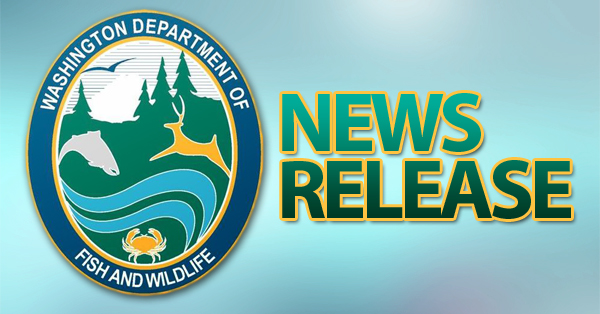Washington Department of Fish and Wildlife
ELLENSBURG – The Washington Department of Fish and Wildlife will take steps this week to assess whether a deadly pathogen has infected the Quilomene bighorn sheep herd in Kittitas County.
The Quilomene is one of the state’s largest bighorn sheep herds, numbering between 220 and 250. WDFW biologists anticipate having to lethally remove 15 sheep, and test 10 to 15 additional animals using non-lethal means, to assess if the herd is infected.
Wildlife biologists were notified on Oct. 1 that an off-duty Kittitas sheriff’s deputy had observed a domestic ewe with seven bighorn rams in a remote area of the Ginkgo Petrified Forest State Park.
Wildlife biologists removed the domestic ewe with the owner’s permission on Oct. 6. Subsequent testing at Washington State University’s veterinary diagnostic laboratory confirmed the ewe was a carrier of Mycoplasma bacteria, which causes fatal pneumonia in bighorn sheep.
“At this time, we know the ewe was with wild bighorns in the most southern portion of the herd’s range, where approximately 50 bighorns are located,” said Mike Livingston WDFW Region 3 Director. “What we have to find out is whether any of the wild sheep have contracted the disease from her. It’s an unfortunate situation, but the operation, which will primarily target rams, should have minimal effect on the overall population.”
The disease, which is caused by the bacteria, is often fatal in wild bighorn sheep and can reduce the survival rate of lambs born to surviving animals for many years after the initial outbreak. There is no treatment for bighorn sheep, and no preventative vaccine.
“Once we know if Mycoplasma has infected the herd, we will have a better understanding of how to move forward,” added Livingston. “And, we must move quickly because the breeding season has started and will peak within the next few weeks.”
During breeding season, rams within the herd often cover vast areas in search of a mate, which would substantially increase the probability of them infecting other bighorn sheep within the Quilomene herd.
Past outbreaks among bighorn sheep in Washington and other parts of the western United States have been linked to contact between wild sheep and domestic sheep or goats that carry Mycoplasma but are unaffected by the bacteria. In 2013, state and federal wildlife managers removed the entire Tieton bighorn sheep herd to prevent the disease from spreading to other bighorn herds.
WDFW is the primary state agency tasked with preserving, protecting, and perpetuating fish, wildlife, and ecosystems, while providing sustainable fishing and hunting opportunities.
49
|
|
Credit: Source link































